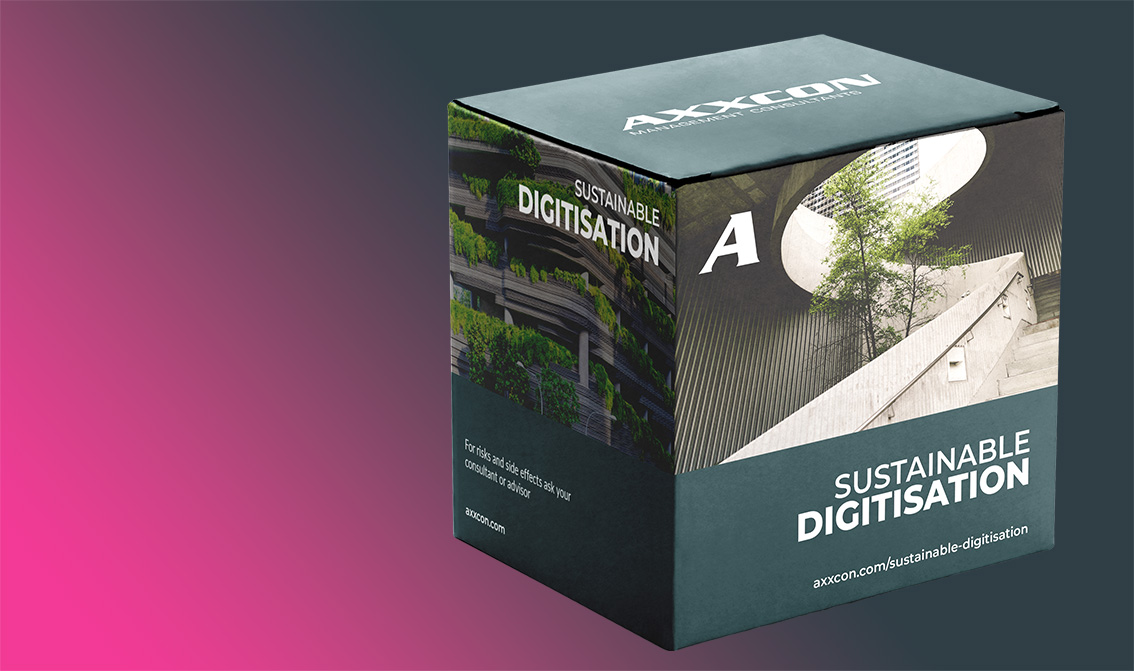
Sustainable digitalisation in practice
A sustainable approach to digitalisation can not only further business objectives and prepare business models for future market needs, but also align them with sustainability goals. However, comprehending how to make digitalisation efforts sustainable requires a thorough evaluation of the entire value chain and an analysis of each link in terms of its emissions. Currently, only 21% of companies are reducing their footprint during product use, with most efforts being directed towards production processes and supply chains. This isolated view often leads to more emissions through growth and rebound effects. Nevertheless, companies should strive towards managing growth sustainably. Sustainability is also multifaceted and encompasses three disciplines: economic, environmental, and social, which include monetary and economic measures, environmental indicators, and corporate responsibility towards people.
The connection between sustainability and digitalisation
In practice, companies have not yet considered all aspects of sustainability when it comes to digitalisation, as the link between sustainability and digitalisation is still a relatively new and rapidly evolving topic and there is still a lack of common understanding, guidelines, and best practices. However, there is already a maturity model for sustainable digitalisation that provides an overview of how the company is positioned and where change is needed by examining five dimensions (strategy, process, data, technology and culture & leadership), supported by additional disciplines and measures.
Different dimensions must be considered
The strategy for sustainable digitalisation should be clearly defined, aligned with the company’s strategy and have transparent sustainability goals, as a company-wide sustainability approach is crucial for the success of the transformation. Commitment and communication of the importance by senior management and employee involvement play an important role in the culture & leadership dimension. Digital process management and a green business infrastructure are important for the process and technology dimension. The data dimension focuses on the quality, completeness and security of data to ensure efficient usability.
The focus on customers and their sustainability needs is an important lever for change
Creating digital solutions requires a lot of rethinking and new structures in organisations. A focus on customers and their sustainability and digital service needs can be an important lever for change. Sustainable digitalisation can be supported by reviewing the business model for sustainability and applying the german 3 V model (avoid, reduce, reuse). Digital solutions can contribute to better business processes in a sustainable and climate-neutral way, for example by avoiding physical mispurchases or supporting a green digital infrastructure.
As a management consultancy specialising in digital transformation, we are committed to evolving and focusing more on sustainability. To this end, we plan to analyse all our digitalisation projects over the next two to three years, collect and categorise key figures and measures for more sustainability in digitalisation, and create the best possible framework to support our clients on their way to more sustainability through digitalisation, so that they can offer their customers the best possible business models, products, and services in terms of sustainable and digital features.
If you would like to learn more about sustainability in the context of digital projects, please contact our consultant Florian Gomm, Senior Manager. If you are interested, we will gladly arrange an appointment with you.

